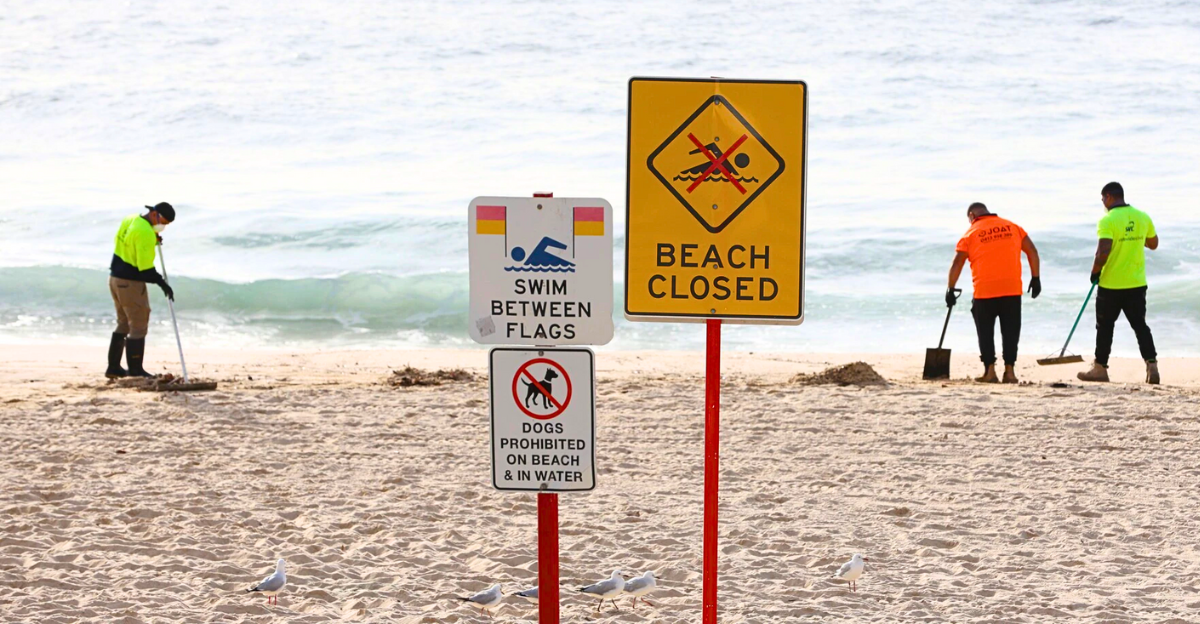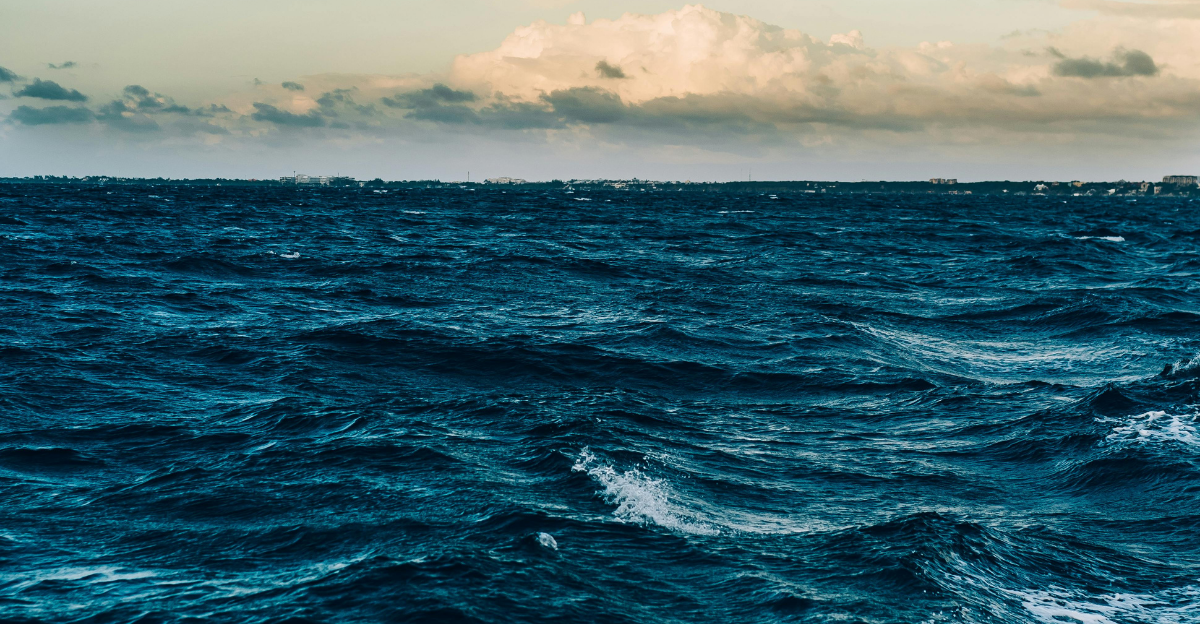
Due to the threat of large waves and hazardous water conditions, the National Weather Service (NWS) recently issued a series of critical regional advisories urging people in affected areas, including parts of California and the Great Lakes region, to avoid entering certain bodies of water. While some reports have cited figures suggesting tens of millions could be affected by these warnings, the actual advisories were geographically targeted and did not constitute a nationwide order. These alerts are supported by extensive meteorological data showing abnormally high wave activity and flooding risks, caused by a confluence of severe weather systems and changes in oceanic and atmospheric patterns brought on by climate change.
As a preventive public safety measure, the NWS’s advisories aim to reduce the risk of drowning, injuries, and the burden on emergency response systems. Similar regional advisories have been successful in lowering fatalities during extreme weather events, according to NOAA, underscoring the significance of prompt and decisive action.
Insights from Previous Disasters

Massive wave events have historically resulted in emergency advisories due to the devastating effects they have had on communities. Hurricane Sandy in 2012 demonstrated how storm waves and surges can travel great distances inland, wreaking havoc along the East Coast of the United States. Lessons learned from such disasters, where prompt warnings and temporary restrictions saved lives, form the foundation of the NWS’s current precautionary messaging.
This order, which affects 66 million people across four states, represents an increase in the scope and complexity of wave threats in contrast to localized flood alerts that affect millions. Such extensive water safety regulations are uncommon in the U.S. historically, highlighting how emergency management paradigms have changed as a result of climate change and stronger storms.
Climate Change and Increasing Dangers

The risks of large waves and water-related disasters are increasing due to climate change. Increased storm energy due to warmer ocean temperatures causes hurricanes, typhoons, and atmospheric rivers to occur more frequently and with greater intensity. Higher waves and storm surges are produced by these phenomena, endangering both inland and coastal communities.
Long-term droughts and water shortages in western states also put a strain on vital reservoirs and dams, like the Glen Canyon Dam on the Colorado River, which provides millions of people with electricity and water. These variables interact to produce a risky scenario where wave-related risks can quickly worsen. Such extreme weather events will become more frequent, according to scientific reports from NOAA and the Intergovernmental Panel on Climate Change (IPCC), which supports the NWS’s extensive precautionary measures to safeguard infrastructure integrity and public safety.
The Social and Psychological Aspects of Compliance

Achieving public adherence to the NWS’s stay-off-water directive requires managing intricate social and psychological dynamics. Clear, consistent messaging from reliable authorities improves compliance with safety instructions, according to crisis communication research. In order to help avoid confusion and panic, the NWS and state emergency agencies have teamed up to provide clear information that highlights the dangers and the temporary nature of the restrictions.
Social psychology also emphasizes how crucial group accountability and community trust are to emergency responses. Compliance increases when people realize how their actions affect the safety of their neighbors and emergency personnel. This order is a prime example of the social contract between the public and the government, which states that in times of extreme natural disaster, lives must be protected by making short-term sacrifices.
Implications for the Economy and Infrastructure

Restricting tens of millions of people’s access to water has a substantial economic impact on sectors like transportation, boating, tourism, and fishing. Ignoring these risks, however, has much higher costs, such as the possibility of fatalities, significant property damage, and protracted power outages. For example, the aftermath of Hurricane Sandy included months of recovery and billions of dollars in economic losses.
Maintaining the supply of clean water and electricity, which are essential for economic stability, is ensured by safeguarding these resources. In order to minimize long-term economic disruption, federal and state agencies support strategic investments in emergency preparedness and resilience.
Advances in Forecasting and Technology to Support the Order

The NWS’s ability to provide accurate and timely warnings is supported by modern meteorological technology. Comprehensive predictions of wave heights, storm surges, and flood hazards are made possible by developments in satellite imaging, wave modeling, and real-time sensor networks. For instance, NOAA’s National Data Buoy Center and the Coastal Data Information Program (CDIP) provide ongoing monitoring that helps with emergency decision-making.
Authorities can enforce stay-off-water orders long before waves reach dangerous levels thanks to the NWS’s ability to forecast hazardous conditions days in advance. Accuracy and response times are further enhanced by forecasting models that incorporate machine learning and artificial intelligence. These technological advancements show a data-driven approach to public safety and validate the scope and urgency of the current order.
Ecological and Environmental Aspects

Local ecosystems are impacted by massive waves and flooding events, which can increase human risks. Abrupt flooding can harm aquatic habitats, riverbanks, and coastal wetlands, causing erosion and biodiversity loss. By limiting human activities that might worsen ecological stress during extreme events, the NWS order indirectly protects these environments.
Thriving ecosystems like marshes and mangroves serve as organic buffers, absorbing wave energy and lessening the effects of flooding. The significance of maintaining these natural defenses as part of integrated disaster risk management is emphasized by scientific studies conducted by academic institutions and the Environmental Protection Agency (EPA). By encouraging resilience for both ecological and human communities, the current directive is in line with more general environmental stewardship objectives.
Frameworks of Law and Policy That Make the Order Possible

Both federal and state emergency management laws give the NWS the power to issue such broad stay-off-water directives. The legal foundation for enforcing temporary restrictions to safeguard public safety during declared emergencies is provided by the Stafford Act and state-level emergency powers. The order is guaranteed to be enforceable and backed by the necessary resources through coordination with organizations like FEMA, state emergency offices, and local governments.
Legal precedents confirm that such actions are both necessary and legal when they are adequately explained and supported by scientific data. This framework, which reflects an established policy approach to managing natural disasters, strikes a balance between individual liberties and public safety. Public trust is further strengthened by accountability and transparency in the issuance and enforcement of the order.
Strategies for Community Preparedness and Resilience

Long-term community readiness is crucial to lessening the effects of large waves and associated disasters, even in the absence of urgent orders. Resilience is increased and vulnerability is decreased through emergency drills, infrastructure improvements, and public education initiatives. Local governments are encouraged to create thorough response plans that include well-defined evacuation routes and communication protocols by initiatives such as NOAA’s StormReady certification.
These initiatives are complemented by investments in flood defenses like levees and seawalls. To ensure that communities react to impending threats in unison, the NWS order acts as a crucial catalyst for triggering these preparedness measures. Increased resilience lowers the overall social and economic cost of extreme water events by speeding recovery and saving lives.
The Need for Preventive Water Safety Actions

The NWS’s decision to keep 66 million Americans off the water in four states during high waves is a socially responsible, legally sound, and scientifically supported move. It displays a deep comprehension of changing climate risks, technological forecasting skills, and the economic and psychological aspects of disaster management. The potential repercussions of inaction, deaths, infrastructure failure, and economic disruption are far more serious, even though the order’s scope is unprecedented.
In an era of growing environmental volatility, this directive is a prime example of the necessary transition from reactive to proactive emergency management. In addition to protecting individual lives, these measures also safeguard the larger social fabric and ecological systems that we rely on by upholding evidence-based policies and encouraging community cooperation.







